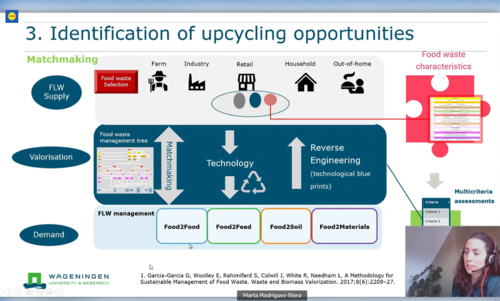Rodriguez-Illera states that we do have the necessary tools to recover the nutrients for food loss waste, but miss the proper “puzzle pieces” to connect them. We have tools and frameworks, data and knowledge, increasing innovation and increasing consumer awareness, to name a few.
What prevents us from having a working circular economy in which food loss waste can be utilized properly are a few things, of which the most important is that we miss a proper set of guidelines and criteria. Without proper criteria for circularity monitoring and validated assessment guidelines, this new circular economy can’t be reached.
Other things that prevent us from reaching a working circular economy are the lack of integration of stakeholders in the supply chain, stiff legal barriers and quality standards, lack of real assessment and risk analysis and lack transparency in quality criteria applicable to food.
Because of these obstacles, Rodriguez-Illera and others are looking to create a new framework for a circular food system based off of existing research and frameworks. When correcting existing frameworks it is important to take two different kind of assessment options into consideration. The first one being strict or intrinsic, which means that the focus lies on criteria like mass and value, the technological cycle and the cycle of materials.
Another assessment method is one in line with the broad sense of circularity, which takes into consideration the sustainability impact (people planet profit), technological feasibility, human health, social and legal aspects and life cycle thinking. Frameworks used to focus on lower-end application like anaerobic digestion, composting or landfill and lacked food-to food frameworks.
One of the frameworks discussed is the framework mentioned in “A Methodology for Sustainable Management of Food Waste. Waste and Biomass Vlorization” (2017) by G. Garcia-Garcia, E. Woolley, S. Rahimifard, J. Colwill, R. White and L. Needham. Their framework is called the Food Waste Management Decision Tree Concept. It looks at different characteristics based on which matchmaking can be simplified. According to the model, to recover the nutrients from food we need to know what we use the nutrients for and how we recover them. It is also important to know what waste we recover the nutrients from. Rodriguez-Illera mentions food loss waste from farms, industries, retail, households and “out-of-home” sources like restaurants. These sources of waste need to be matched with new places to use it. You can use the nutrients for food2food, food2feed, food2soil and food2materials. This means that the food waste is used in new food, to feed animals, in soil and in materials. To reach this, proper technology and reverse engineering has to be matched to this process as well.
Rodriguez-Illera’s critique on the FWMDT concept is that there should be quality criteria added to the existing criteria. These criteria are microbiological hazards and shelf life, nutritional and chemical value, environmental impact and economical and legal aspects. These criteria will be further explained in the upcoming publication by her and researchers Xuezhen Guo, Marta Rodriguez-Illera, Yujun Wei, Martijnetje Vollebregt and Wei-Shan Chen.
